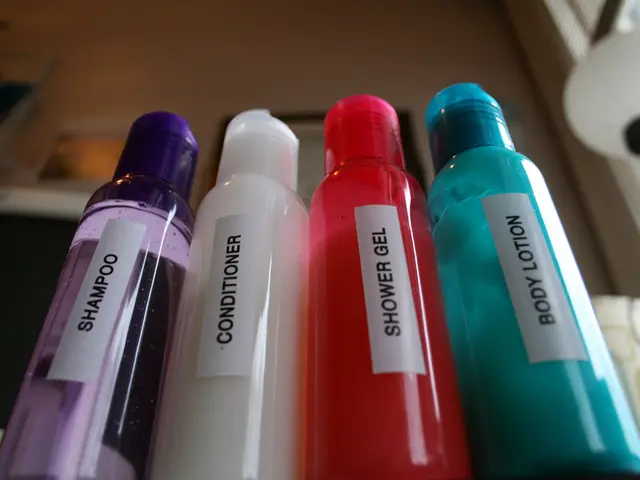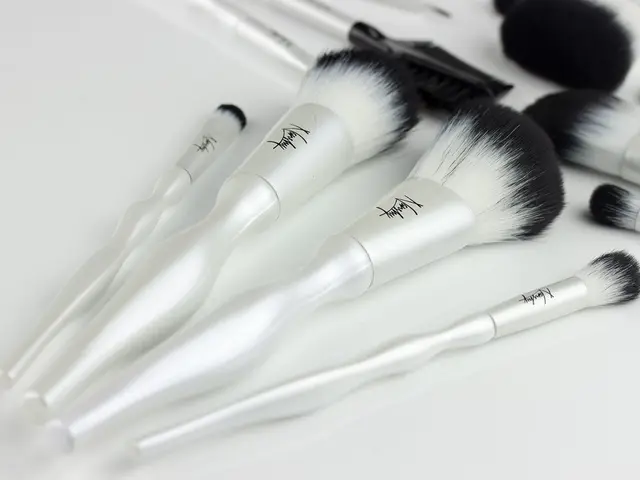Identifying age spots versus skin cancer: Recognizing the Distinct Differences
Laid-back Guide to Age Spots, Skin Cancer, and Actinic Keratosis
Let's dive into the world of age spots, skin cancer, and actinic keratosis – three conditions that can look similar but have major differences. Knowing the key distinguishing features of each condition can help you identify when it's time to seek medical help.
Distinguishing the Differences
Age Spots
Age spots, often called liver spots or solar lentigines, are darker patches on the skin that appear as a person matures. They are generally flat and smooth, with no itching or crusty feel. Age spots develop due to an overproduction of melanin in the skin, protecting it from sun damage. These spots are most common in people with lighter skin tones but can appear on any skin color. They usually become more prominent as you age.
Skin Cancer
Unlike age spots, skin cancer is a serious health concern. Skin cancer is caused by damage to the skin cells due to UV radiation or other environmental and genetic factors. It most commonly occurs in areas exposed to the sun, like the face, hands, and shoulders, due to excessive sun exposure. Skin cancer can be deadly if left untreated, so it's essential to be aware of its signs.
There are three main types of skin cancer:
- Basal cell carcinoma: These skin cancers may appear as pearly, shiny bumps or flat, firm, and scaly spots with a white, yellow, or waxy appearance.
- Squamous cell carcinoma: This type of skin cancer often appears as a raised, red or reddish-brown patch, sometimes scaly or crusted.
- Melanoma: Melanoma is a highly aggressive type of skin cancer that can develop in existing moles or as new spots on the skin. Melanomas have an irregular shape, variegated color, and can be painful or itchy.
Another condition that can resemble age spots is actinic keratosis, a precancerous growth caused by sun damage.
Symptom Comparaison
Paying attention to the size, shape, texture, and color can help you tell the difference between the conditions.
Age Spot Symptoms
Age spots:
- Are flat and smooth
- Yellow, brown, or gray
- Have defined, clear borders
- Vary in size from a few millimeters to centimeters
- Occur on sun-exposed areas like the face, hands, shoulders, feet, arms, and back
- Can fade in winter and become more pronounced in summer
Skin Cancer Symptoms
Skin cancer symptoms can vary, but here are some signs that a skin growth may be cancerous:
- Irregular, blurred, or ragged edges
- Changing size, color, or shape
- Multiple colors on the same spot
- Pink, blue, purple, black, or brown coloring
- Raised, red patches
- Pale or yellow firm patches, similar to scars
- Pain, itching, oozing, or bleeding that does not heal within 4 weeks
- Crusty or scaly patches
- Raised edges that lower in the middle
Actinic Keratosis Symptoms
Actinic keratosis can indicate a precancerous growth and should be investigated by a healthcare professional. Its symptoms include:
- Raised, rough, or scaly patches
- Red, gray, pink, or skin-colored patches
- Flat, scaly patches that look like age spots
- Clusters of scaly bumps like acne on the face, backs of the hands, or forearms
- Pale or scaly patches on the lips (actinic cheilitis)
- Horn-like growths
When to Contact a Doctor
If you notice any changes in your skin that are not usual for you, don't hesitate to speak with a doctor. Early detection of skin cancer can make it easier to treat. Seek medical attention if a mark on the skin:
- Changes in color, shape, size, or location
- Isn't the same as other marks on your skin
- Itches, crusts, scabs over, or bleeds and does not heal within 4 weeks
Treatment Options
Treatment for age spots, skin cancer, and actinic keratosis varies depending on the specific condition and its severity.
If you have questions or concerns about changes in your skin, speak with a healthcare professional for guidance and a proper diagnosis. They can help you determine the best course of action for your situation. Stay sun-safe, and enjoy your life to the fullest! ☀️🌞☀️
- As we age, seniors might develop age spots, often referred to as liver spots or solar lentigines, on their skin.
- Oncology is a science that deals with the prevention, diagnosis, and treatment of cancer, including skin cancer.
- Skin cancer is a serious medical-condition that can be deadly if left untreated, and it is caused by damage to the skin cells due to UV radiation or other factors.
- Dermatology is a field of medical-conditions that focuses on skin health and skin care, age spots, skin cancer, and conditions like actinic keratosis are covered under this field.
- Melanoma is a type of skin cancer that is highly aggressive, develops in existing moles or as new spots on the skin, and can be identified by its irregular shape, variegated color, and potentially painful or itchy symptoms.
- Other skin cancers, like basal cell carcinoma and squamous cell carcinoma, can also manifest as pearly, shiny bumps or firm, scaly spots with various colours and shapes.
- Actinic keratosis, a precancerous growth caused by sun damage, may resemble age spots and can be identified by its raised, rough, or scaly texture and red, gray, pink, or skin-colored appearance.
- Health-and-wellness is closely related to the prevention of skin cancer, sun-exposure should be limited, and the early detection of symptoms is essential through regular self-examinations and professional medical check-ups.








